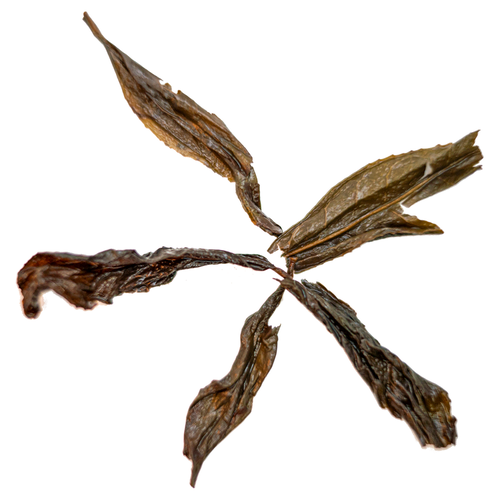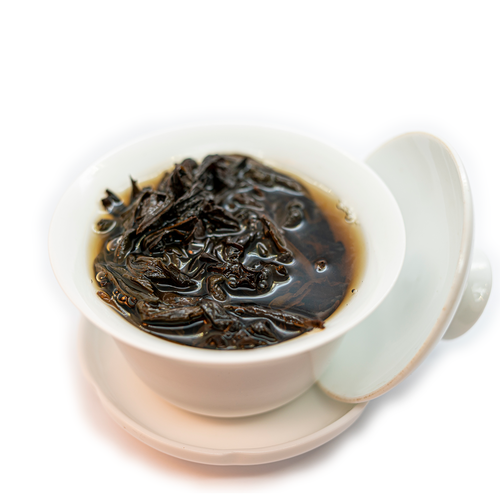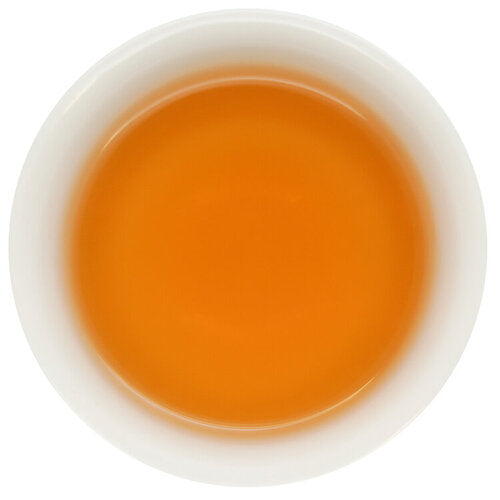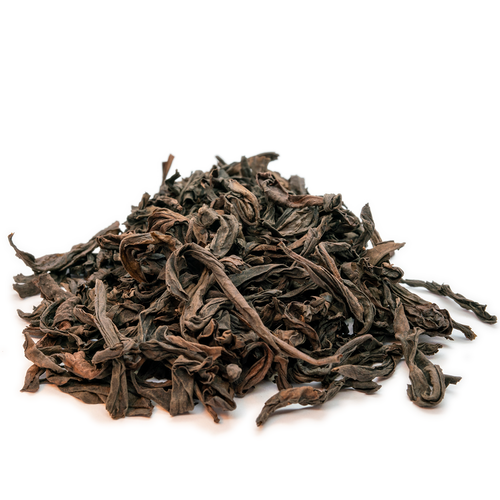Da Hong Pao holds weighty history in Chinese tea and much excitement around its folklore. Our Zheng Yan Da Hong Pao is as exquisite as first love, the beauty that stayed forever young. You'll want to write poetry for this tea!
Da Hong Pao, AKA "Great Red Robe," is derived from various tales around six tea bushes that hang halfway of a cliff behind the ancient Tian Xin Yong Le Temple. Though Da Hong Pao as Wu Yi folklore has been around for a while, the association with these specific trees (three then, six now) was not recorded until the 1920s. It is the only blend among China's famous teas with a designated name. Da Hong Pao is a blend of multiple varietals balancing texture and aroma. Each of our vintages is custom-made and blended by award-winning family farms. Recent studies found that these six trees are not a single varietal but rather different varietals, making Da Hong Pao naturally a blended loose leaf tea. There hasn't been any picking from the original trees since 2006. Today, Da Hong Pao is the commercial name for blended Yan Cha but is often wrongly marketed as synonymous for all Yan Cha, or as a rare Yan Cha, aided by the tourist industry locally.
Da Hong Pao is known for its bold, lavish, floral flavor with a lingering minerality.
Yan Cha tea is made with only the leaves, making it one of the latest teas to be harvested each year, with Ban Yan picking time around early to mid-April and Zheng Yan early May. After the teas are sufficiently wilted, they remain on bamboo trays for a few hours before being shaken or tumbled to manage enzyme activity. This step regulates how the water inside the leaves travels outward. The process is repeated every hour, 5-8 times throughout the evening and night until morning. Once the teas are acceptably fermented in the early morning, they are then wok-fried to kill the enzymes in the leaves to stop the fermentation. Fresh out of the wok when the leaves are still hot and soft, they are rolled vigorously to break the surface membranes to bring out more consistent flavors in the tea. The most tedious step in all Chinese tea making is the stem-picking step, which in Yan Cha's case takes place for several months following the rough tea making. It is a step where undesired yellow leaves (old leaves) and stems are picked out by hand. The "cleaned" tea is then roasted on very dim charcoal ash for 8–12 hours, 1-3 times depending on the varietal, to make it a finished Yan Cha.








